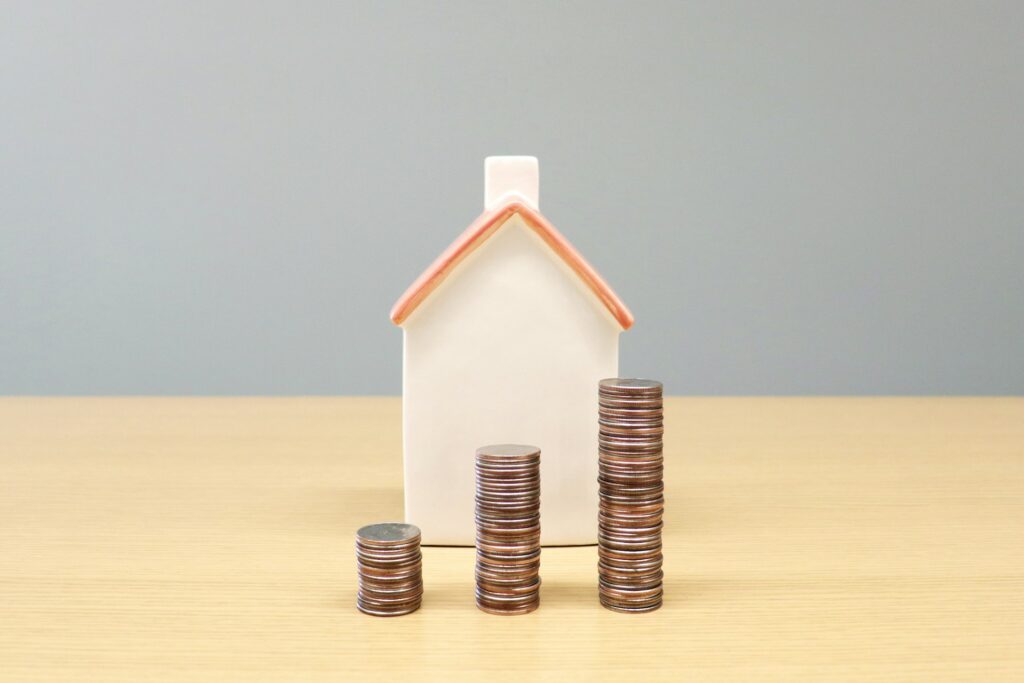Every homeowner dreams of a more functional, comfortable, and energy-efficient home. Whether it’s replacing an aging roof, installing new windows, or upgrading your home’s exterior siding, these projects ultimately boost comfort, property value, and long-term savings. Yet the question often remains: How do you pay for such major improvements? This guide explores financing strategies that can ease the process and help you select the best option for your specific needs.
Understanding the Importance of Home Improvement Financing
Home improvement projects often require a significant investment. While setting aside savings or using existing cash reserves is one approach, many homeowners prefer a specialized financing plan. Just like tending to a garden, you plant upfront resources—time, money, and energy—to enjoy the promise of a bountiful harvest. In this case, that harvest includes greater home value, improved energy efficiency, and more everyday comfort.
- Large-scale projects like a roof replacement can help you avoid leaks and structural damage.
- Upgrading windows can reduce heating and cooling expenses.
- Replacing siding can add curb appeal and protect your home from the elements.
Financing home improvements is about investing in future well-being. If done smartly, you’ll tap into an adaptable strategy that supports immediate upgrades while preserving healthy cash flow.
Considering Your Overall Financial Situation
Before committing to a specific financing plan, assess your broader financial context. Identify how this project fits into your economic life, both now and in the years ahead. Consider:
- How much you can comfortably repay each month
- Your current credit score and outstanding debts
- Interest rates or fees you might face
- Potential tax implications
By weighing these factors carefully, you’ll ensure that your chosen financing approach smoothly integrates with your broader financial goals. This kind of real-time alignment helps you adapt swiftly if circumstances change—just like updating a home improvement plan if new requirements arise.
Common Financing Options
Different financing solutions cater to different homeowners. Let’s explore the major financing approaches available in today’s landscape.
Home Equity Loans
Home equity loans are a popular way to finance large home improvement projects. They allow you to borrow against the accrued equity in your house and typically come with a fixed interest rate. With this approach, you receive a lump sum upfront and repay it in monthly installments over a set term.
- Predictable monthly payments simplify budgeting
- Ideal for fixed-cost projects like window or siding replacement
- Usually offer lower interest rates than many unsecured loans
This option is particularly helpful if you’ve built substantial equity over time and can clearly define the total cost of your upgrades. It’s like planting seeds in one distinct location: you know exactly how much space and nutrients they require, so you can precisely plan the effort.
Home Equity Lines of Credit (HELOC)
A HELOC is a revolving form of credit that also leverages your home’s equity. Instead of receiving a lump sum, you have access to a credit line up to a certain limit, and you can draw on it as needed. This structure is especially useful for projects with variable costs or uncertain timelines.
- Flexible borrowing that adjusts to your needs
- Interest charges apply only to the funds you use
- Can handle multiple projects without multiple loan applications
Because the interest rate is typically variable, it might shift over time, making monthly payments fluctuate. If you anticipate periodic improvements—like a multi-stage renovation—this flexibility can save you from applying for multiple loans.
Personal Loans
Personal loans don’t require collateral, making them a straightforward choice if your home equity is limited or you need financing quickly. These loans often have faster approval times and fixed interest rates, although the rates may be higher than those of home equity loans or HELOCs.
- No need to put your home on the line
- Upfront clarity about repayment terms
- Quick and convenient for smaller or midrange projects
One practical example might be tackling a moderate roof repair or partial window replacement. The process is smooth, and the payback structure is easy to understand, but keep in mind that higher interest costs might emerge.
Cash-Out Refinancing
Cash-out refinancing allows you to replace your current mortgage with a new one for a higher amount, effectively letting you pull out the difference in cash. The funds can then be used to finance your home improvements.
- Potentially lower interest rates if market conditions are favorable
- Single monthly payment simplifies budgeting
- May be beneficial if you want to modify your mortgage terms
Just understand that this option recalibrates your mortgage, effectively resetting it. Think of it as replanting your garden with upgraded soil and fresh seedlings. The advantage is an enhanced overall structure, but you need to commit to the new repayment schedule.
Government-Backed Loans
Some government agencies offer assistance and specialized loan programs designed for home improvement. For instance, an FHA Title I loan may help homeowners with less equity or lower credit scores meet financing requirements. Similarly, certain USDA programs could support those in more rural areas, offering lower interest rates for qualified improvements.
- Flexible eligibility criteria
- Potentially lower monthly payments
- Support for specialized upgrades (e.g., energy efficiency projects)
These loans can be especially helpful if you intend to make your home more adaptable or sustainable. You might explore the FHA’s improvement loan options or research USDA initiatives in your region.
Credit Cards
Credit cards are generally not the best choice for major renovations, but they can help pay for smaller-scale projects or fill short-term gaps. If you can secure a card with a low or introductory 0% APR, you might handle costs without incurring heavy interest.
- Convenient and easy to use
- Quick for minor repairs or upgrades
- Potential to earn cash-back or rewards
Proceed with caution. High-interest rates can quickly accumulate if you don’t repay the balance before the promotional period ends. Smaller projects like adding a fresh coat of paint or purchasing new fixtures could be manageable—but it’s wise to avoid credit card debt for larger-scale improvements.
Planning and Budgeting for Success
After pinpointing the financing option that suits you, develop a clear budget. Here’s a simple way to structure it:
- Outline the total cost: Gather estimates from reputable contractors or suppliers.
- Identify a buffer: Build in a small cushion (around 10–15%) for unforeseeable expenses.
- Factor in ongoing costs: Some projects, such as high-efficiency upgrades, might reduce monthly utility bills. Others, like specialized siding, could require minimal maintenance over time.
- Compare repayment timelines: Shorter terms often mean lower overall interest costs, but higher monthly payments. Longer terms free up more immediate cash each month but can result in higher interest.
By clearly mapping these steps, you’ll remove guesswork. The process becomes like nurturing a growing tree: each phase, from planting the seed to pruning branches, involves manageable, strategic decisions.
Finding the Right Lenders and Partners
Selecting a trustworthy lender or partner is crucial. Here are simple ways to ensure you’re working with reputable professionals:
- Check reviews and references: Sites like the Better Business Bureau can guide you on a company’s reputation.
- Seek multiple offers: Compare interest rates, fees, and repayment timelines.
- Examine fine print: Understand any penalties for early repayment or potential hidden charges.
- Ask about experience with similar projects: Lenders familiar with home improvement financing often offer more tailored advice.
By choosing the right partner, you gain confidence that the transaction is fair, transparent, and aligned with your interests.
Timing Your Improvements Strategically
Certain renovation seasons might allow you to secure more favorable pricing or scheduling:
- Off-peak seasons: Contractors may offer discounts or have more availability during slower months.
- Seasonal promotions: Roofing or window companies sometimes run promotions in transition seasons (e.g., spring or fall).
- Align with personal milestones: If you’re expecting a larger tax return or bonus, timing your improvements to coincide with extra funds might reduce your financing amount or duration.
Think of this as planting your garden in spring rather than mid-summer—it aligns your efforts with natural opportunities for growth and success.
Fostering Long-Term Value
The right financing solution isn’t just about borrowing money; it’s about enhancing your home’s intrinsic worth. By placing improvements in a broader context, you’ll see how each choice contributes to a more comfortable, functional, and valuable living space in the long run.
- Energy-efficient upgrades can lead to substantial utility savings over time.
- Quality upgrades often boost resale appeal, should you decide to move later.
- Well-maintained features—like roofing, windows, and siding—prevent costly structural problems.
When approached thoughtfully, financing a home improvement project becomes a transformative decision. You adapt your living environment to match your evolving needs, and you foster ongoing stability through well-planned budgeting and repayment.
Balancing Future Adaptability
As you consider major improvements, remain open to your home’s future growth. Today’s renovation might pave the way for tomorrow’s upgrades. A flexible financing approach allows you to adapt if new priorities arise or your circumstances shift.
- Plan for potential expansions, such as an additional living area or upgraded kitchen.
- Allow for evolving technology, like integrated smart-energy systems.
- Keep renovation records to simplify future financing applications.
A home thrives when it mirrors your changing lifestyle. By balancing these future intentions with your present-day reality, you maintain steady progress toward a truly comfortable, efficient, and timeless living environment.
Building Confidence Through Knowledge
Feeling confident about financing your home improvement project starts with knowledge. By understanding the range of options—home equity loans, HELOCs, personal loans, cash-out refinancing, government-backed programs, and credit cards—you equip yourself to navigate this journey with purpose. This is the essence of organic learning: building on foundational insights so you can adapt them in real time as new information comes to light.
Even after selecting a financing pathway, keep refining your understanding of the repayment terms and possibilities for modification. Conditions sometimes shift, and you can use your evolving knowledge to optimize your plan. Approaching home renovation is a reminder that every stage of growth can be nurtured with the right resources, care, and strategy.
Bringing It All Together
Ultimately, financing a home improvement project is more than a short-term fix. It’s a forward-looking investment that intertwines with your everyday life, comfort, and financial well-being. Whether you lean on home equity, tap a personal loan, or explore specialized programs, the goal remains the same: unlocking a healthier, more functional home, while preserving your financial security.
By planning carefully, choosing the right financing strategy, and staying open to unforeseen developments, you’ll handle each phase with clarity and confidence. Just as a garden flourishes when nurtured consistently, your home will benefit from a financing path that adapts to conditions while remaining steady at its core.
As you move forward, remember that thoughtful home renovation financing is your ally. It ensures your roof stands strong, your windows close snugly, and your siding protects faithfully—all while supporting a sustainable, value-enhancing future. When done right, this transformative process breathes new life into your home, nurturing comfort and value for years to come.




